 Search by Keyword
|
“BLUE JAY WAY”
(George Harrison)
Both of the George Harrison compositions released in 1967 have one thing in common. His return from a truly inspirational trip to India in 1966 found him “losing interest in being ‘fab’ at that point,” as he’s quoted as saying in the book “Anthology.” Therefore, his songwriting the following year reflected his infatuation with Indian music.
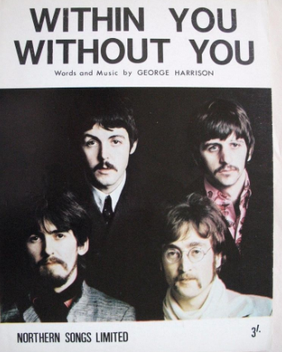 His “Sgt. Pepper” track, “Within You Without You,” is set upon a single note drone which, for all intents and purposes, maintained a single chord throughout while his vocal melody line leapt and dove around it. This melody may have hinted at a chord change here and there but, in actuality, the chord never changed. Likewise, his contribution for the “Magical Mystery Tour” project, namely “Blue Jay Way,” kept to this pattern, the melody line hovering around the key of C for its duration. His “Sgt. Pepper” track, “Within You Without You,” is set upon a single note drone which, for all intents and purposes, maintained a single chord throughout while his vocal melody line leapt and dove around it. This melody may have hinted at a chord change here and there but, in actuality, the chord never changed. Likewise, his contribution for the “Magical Mystery Tour” project, namely “Blue Jay Way,” kept to this pattern, the melody line hovering around the key of C for its duration.
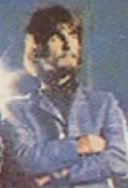 For those who showed a distaste for George’s religious subject matter in “Within You Without You,” as well as his Indian instrumentation, they could at least say that this later contribution was more Western in nature, avoiding all sitars and tablas in favor of drums, keyboards, Beatles harmonies and even psychedelic studio effects. And the lyrical content, however mundane, was at least something the general public could relate to, namely friends coming over but getting lost in the fog. But underneath it all, “I’d just got back from India,” George explained, “and my heart was still out there.” The music of India was in his blood and, upon examination, “Blue Jay Way” reflects this quite clearly. For those who showed a distaste for George’s religious subject matter in “Within You Without You,” as well as his Indian instrumentation, they could at least say that this later contribution was more Western in nature, avoiding all sitars and tablas in favor of drums, keyboards, Beatles harmonies and even psychedelic studio effects. And the lyrical content, however mundane, was at least something the general public could relate to, namely friends coming over but getting lost in the fog. But underneath it all, “I’d just got back from India,” George explained, “and my heart was still out there.” The music of India was in his blood and, upon examination, “Blue Jay Way” reflects this quite clearly.
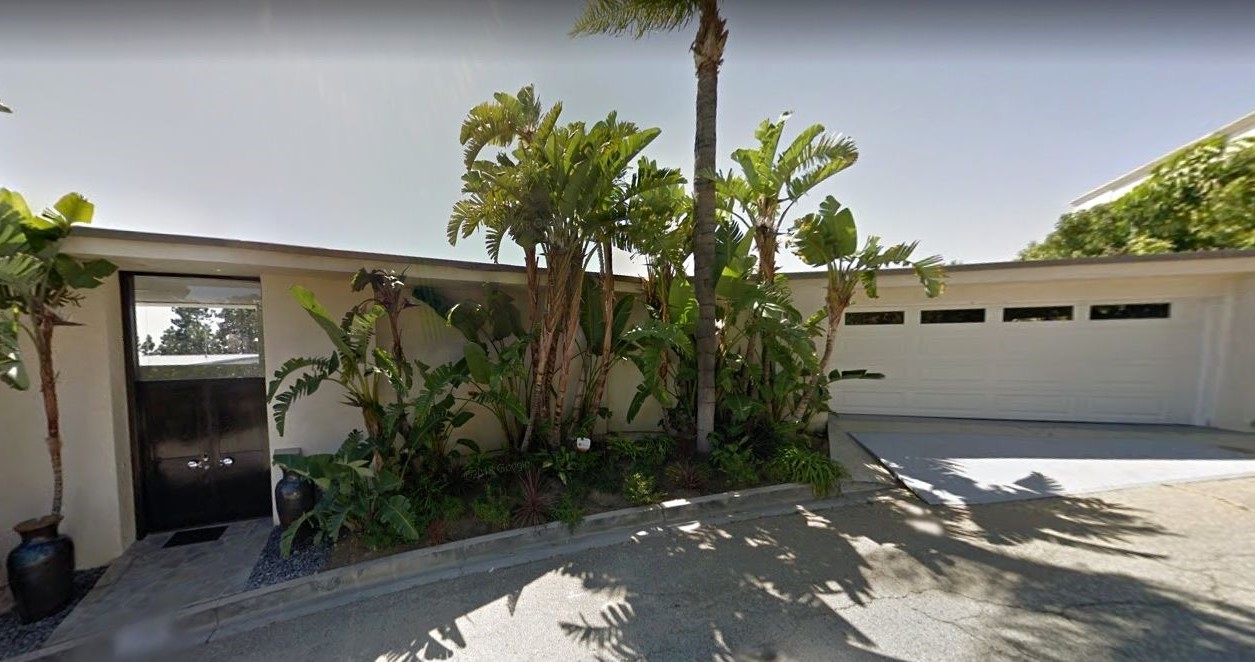
1567 Blue Jay Way, Los Angeles, California (where George wrote began writing the song "Blue Jay Way")
Songwriting History
In the first week of August, 1967, George, his wife Pattie, Neil Aspinall and Alex Mardas (aka “Magic Alex”) flew from Britain to California, the primary reason being to attend Ravi Shankar’s Hollywood Bowl concert on August 4th of that year. In order to help promote the event, George agreed to give a press conference with Ravi the day before. Also while there, Pattie’s sister Jenny Boyd, who was living in Haight-Ashbury, encouraged them to visit San Francisco to witness the hippie scene they had all heard about, an invitation they accepted which resulted in George’s condemnation of them as “bums.”
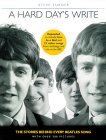 Accommodations were arranged for them in advance, these explained in Steve Turner’s book “A Hard Day’s Write”: “On arrival in Los Angeles on August 1st, they were driven to a small rented cottage with a pool on Blue Jay Way, a street high in the Hollywood Hills above Sunset Boulevard. It belonged to Robert Fitzpatrick, a music business lawyer who was on vacation in Hawaii. Derek Taylor, formerly the Beatles’ press officer and now a publicist working in Los Angeles, was due to visit them on their first night in town.” Accommodations were arranged for them in advance, these explained in Steve Turner’s book “A Hard Day’s Write”: “On arrival in Los Angeles on August 1st, they were driven to a small rented cottage with a pool on Blue Jay Way, a street high in the Hollywood Hills above Sunset Boulevard. It belonged to Robert Fitzpatrick, a music business lawyer who was on vacation in Hawaii. Derek Taylor, formerly the Beatles’ press officer and now a publicist working in Los Angeles, was due to visit them on their first night in town.”
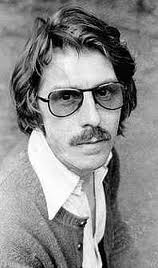 Derek Taylor explains the events of that day. “They’d ring and say; ‘We’re here.’ So I asked them, ‘Where are you?’ ‘In Blue Jay Way,’ he replied. ‘Where’s that?’ I asked. ‘I don’t know,’ he replied, ‘somewhere up in the hills.’ So I said to him, ‘Never mind. I’ll ask a policeman. There are plenty of them around.’ So I set out to find them, and while he was waiting, with jet lag and Pattie, he sat down at an organ in the hall and started, ‘Please don’t be long…My friends have lost their way…There’s a fog upon LA…They’ll ask a policeman on the beat…There’s so many there to meet.’” Derek Taylor explains the events of that day. “They’d ring and say; ‘We’re here.’ So I asked them, ‘Where are you?’ ‘In Blue Jay Way,’ he replied. ‘Where’s that?’ I asked. ‘I don’t know,’ he replied, ‘somewhere up in the hills.’ So I said to him, ‘Never mind. I’ll ask a policeman. There are plenty of them around.’ So I set out to find them, and while he was waiting, with jet lag and Pattie, he sat down at an organ in the hall and started, ‘Please don’t be long…My friends have lost their way…There’s a fog upon LA…They’ll ask a policeman on the beat…There’s so many there to meet.’”
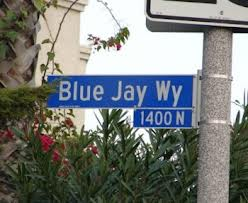 George himself explained in 1968: “Derek Taylor got held up. He rang to say he'd be late. I told him on the phone that the house was in Blue Jay Way. And he said he could find it okay...he could always ask a cop. So I waited and waited. I felt really knackered with the flight, but I didn't want to go to sleep until he came. There was a fog and it got later and later. To keep myself awake, just as a joke to pass the time while I waited, I wrote a song about waiting for him in Blue Jay Way. There was a little Hammond organ in the corner of this house which I hadn't noticed until then...so I messed around on it and the song came." George himself explained in 1968: “Derek Taylor got held up. He rang to say he'd be late. I told him on the phone that the house was in Blue Jay Way. And he said he could find it okay...he could always ask a cop. So I waited and waited. I felt really knackered with the flight, but I didn't want to go to sleep until he came. There was a fog and it got later and later. To keep myself awake, just as a joke to pass the time while I waited, I wrote a song about waiting for him in Blue Jay Way. There was a little Hammond organ in the corner of this house which I hadn't noticed until then...so I messed around on it and the song came."
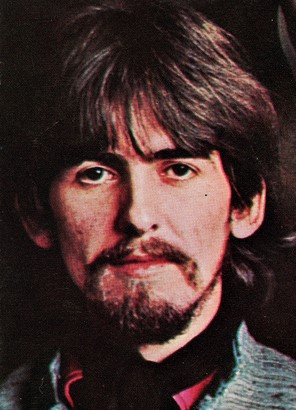 Derek Taylor continues: “By the time I had reached them, the song was virtually intact. Of course, at the time, I felt very bad because here were these two wretchedly jet-lagged people, and I was about two hours late to meet them. But here, indeed, was a song that would turn up on ‘Magical Mystery Tour.’” Regarding the innocent inspiration for the song, Derek Taylor concludes: “I read somewhere that someone interpreted the line ‘Please don’t be long’ as an instruction to the young, saying, ‘Don’t belong, don’t belong to society as we know it. Drop out!’ In truth, ‘Blue Jay Way’ is just a simple little song.” In addition to this is George’s comment: “The mood is also slightly Indian." Derek Taylor continues: “By the time I had reached them, the song was virtually intact. Of course, at the time, I felt very bad because here were these two wretchedly jet-lagged people, and I was about two hours late to meet them. But here, indeed, was a song that would turn up on ‘Magical Mystery Tour.’” Regarding the innocent inspiration for the song, Derek Taylor concludes: “I read somewhere that someone interpreted the line ‘Please don’t be long’ as an instruction to the young, saying, ‘Don’t belong, don’t belong to society as we know it. Drop out!’ In truth, ‘Blue Jay Way’ is just a simple little song.” In addition to this is George’s comment: “The mood is also slightly Indian."
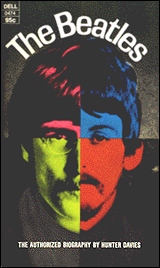 Interestingly, George's original handwritten lyrics for the song, which were suitably written on stationary with the letterhead "Robert Fitzpatrick Associates...Los Angeles," include an additional verse omitted from the released song. The verse continues the story by saying, "When I see you at the door/ I know your (sp) worth waiting for/ for the moment when you speak/ I know I'd wait here all week." Also, the opening line of the song, according to this document, was "There's a fog on Blue Jay Way," the last four words being scribbled out and replaced with "upon L.A." Apparently, the song needed more work after this day. According to Hunter Davies' biography "The Beatles," he states: "When he came home to Esher, he bought himself a little Hammond organ, painted it white, and perfected the song." Interestingly, George's original handwritten lyrics for the song, which were suitably written on stationary with the letterhead "Robert Fitzpatrick Associates...Los Angeles," include an additional verse omitted from the released song. The verse continues the story by saying, "When I see you at the door/ I know your (sp) worth waiting for/ for the moment when you speak/ I know I'd wait here all week." Also, the opening line of the song, according to this document, was "There's a fog on Blue Jay Way," the last four words being scribbled out and replaced with "upon L.A." Apparently, the song needed more work after this day. According to Hunter Davies' biography "The Beatles," he states: "When he came home to Esher, he bought himself a little Hammond organ, painted it white, and perfected the song."
 One clarification needs to be made, however, concerning author Steve Turner’s description of the house George wrote the song in on August 1st, 1967, as contained in his book "A Hard Day's Write." This luxurious house at 1567 Blue Jay Way is well over 4000 square feet with a beautiful outdoor swimming pool, a theater room, a spa, three bedrooms and 2.25 baths. It even still contains the Hammond organ he wrote the song on, although the owner says “the last time he plugged it in, it started smoking.” It was up for sale in 2012 with a listing price of $4,599.000. Not bad for “a small rented cottage.” One clarification needs to be made, however, concerning author Steve Turner’s description of the house George wrote the song in on August 1st, 1967, as contained in his book "A Hard Day's Write." This luxurious house at 1567 Blue Jay Way is well over 4000 square feet with a beautiful outdoor swimming pool, a theater room, a spa, three bedrooms and 2.25 baths. It even still contains the Hammond organ he wrote the song on, although the owner says “the last time he plugged it in, it started smoking.” It was up for sale in 2012 with a listing price of $4,599.000. Not bad for “a small rented cottage.”
Recording History
Just over a month after it was written, the group entered EMI Studio Two on September 6th, 1967, to lay down the rhythm track to “Blue Jay Way.” Having arrived sometime after 7 pm as the documents stipulate, they first continued work on John’s “I Am The Walrus,” which had been started the day before. Then, at approximately midnight, work began on George’s song.
 Geoff Emerick, in his book “Here, There And Everywhere,” recalls the session. “Earlier that evening, we had also laid down the rhythm track for a new Harrison song called ‘Blue Jay Way.’ It was, to my way of thinking, a bit of a dirge, and, frankly, I was a bit relieved when previous commitments kept me from completing the song the next night…Perhaps the main problem was that George had written and played it on organ, and he really only knew a few chords – he was even less of a keyboardist than John was.” Geoff Emerick, in his book “Here, There And Everywhere,” recalls the session. “Earlier that evening, we had also laid down the rhythm track for a new Harrison song called ‘Blue Jay Way.’ It was, to my way of thinking, a bit of a dirge, and, frankly, I was a bit relieved when previous commitments kept me from completing the song the next night…Perhaps the main problem was that George had written and played it on organ, and he really only knew a few chords – he was even less of a keyboardist than John was.”
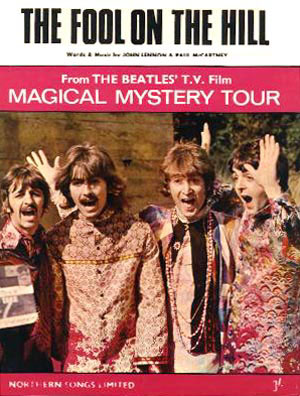 Opinions aside, after a good amount of rehearsal, only one take was needed to capture the rhythm track, this consisting of George on organ, Paul on bass and Ringo on drums (John apparently sitting this one out). By around 2 am the following morning, they let the song rest until their next session later that evening, Paul then stepping over to the piano to lay down a quick demo of “The Fool On The Hill.” The session was over by 3 am. Opinions aside, after a good amount of rehearsal, only one take was needed to capture the rhythm track, this consisting of George on organ, Paul on bass and Ringo on drums (John apparently sitting this one out). By around 2 am the following morning, they let the song rest until their next session later that evening, Paul then stepping over to the piano to lay down a quick demo of “The Fool On The Hill.” The session was over by 3 am.
That evening, September 7th, 1967, was earmarked entirely for adding overdubs to “Blue Jay Way,” the session once again documented as starting at 7 pm. The only overdubs recorded on this day were lead and background vocals but, with Peter Vince substituting for Geoff Emerick as engineer, the song transformed from a “dirge” to something quite extravagant.
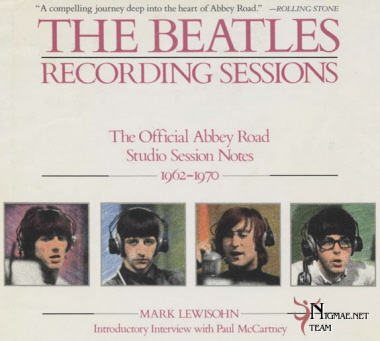 The results of this day's work are best described by Mark Lewisohn in his book “The Beatles Recording Sessions.” “’Blue Jay Way’ was to George Harrison what – in recording terms – ‘Strawberry Fields Forever’ or ‘I Am The Walrus’ were to John Lennon, in that it seized upon all the studio trickery and technical advancements of 1966 and 1967 and captured them in one song. ‘Blue Jay Way’ – as it ended up on disc – could not have been the same without Ken Townsend’s ADT (“artificial double tracking”) and associated ‘flanging’ effect…Just like John’s two songs, ‘Blue Jay Way’ makes fascinating listening for anyone interested in what could be achieved in a 1967 recording studio…The song manages to capture the feel of the fog very well, with its…extensive use of ADT – at its very widest use – to create a phasing effect of almost two voices.” The results of this day's work are best described by Mark Lewisohn in his book “The Beatles Recording Sessions.” “’Blue Jay Way’ was to George Harrison what – in recording terms – ‘Strawberry Fields Forever’ or ‘I Am The Walrus’ were to John Lennon, in that it seized upon all the studio trickery and technical advancements of 1966 and 1967 and captured them in one song. ‘Blue Jay Way’ – as it ended up on disc – could not have been the same without Ken Townsend’s ADT (“artificial double tracking”) and associated ‘flanging’ effect…Just like John’s two songs, ‘Blue Jay Way’ makes fascinating listening for anyone interested in what could be achieved in a 1967 recording studio…The song manages to capture the feel of the fog very well, with its…extensive use of ADT – at its very widest use – to create a phasing effect of almost two voices.”
 Before they started on this day, however, a tape reduction needed to be made of the rhythm track to open up more tracks for overdubbing. This being done, which took "take one" to "take two," George recorded his lead vocals with extensive ADT applied. Another tape reduction was needed to open up more tracks, so this brought the recording to "take three," upon which was recorded the backing vocals of George, John and Paul, which were also treated to extensive ADT “flanging.” No wonder that, after all of this work, substitute engineer Peter Vince described the song to the returning Geoff Emerick saying, “Oh, it wasn’t that bad.” By 3:15 am the following morning, they finished for the day. Before they started on this day, however, a tape reduction needed to be made of the rhythm track to open up more tracks for overdubbing. This being done, which took "take one" to "take two," George recorded his lead vocals with extensive ADT applied. Another tape reduction was needed to open up more tracks, so this brought the recording to "take three," upon which was recorded the backing vocals of George, John and Paul, which were also treated to extensive ADT “flanging.” No wonder that, after all of this work, substitute engineer Peter Vince described the song to the returning Geoff Emerick saying, “Oh, it wasn’t that bad.” By 3:15 am the following morning, they finished for the day.
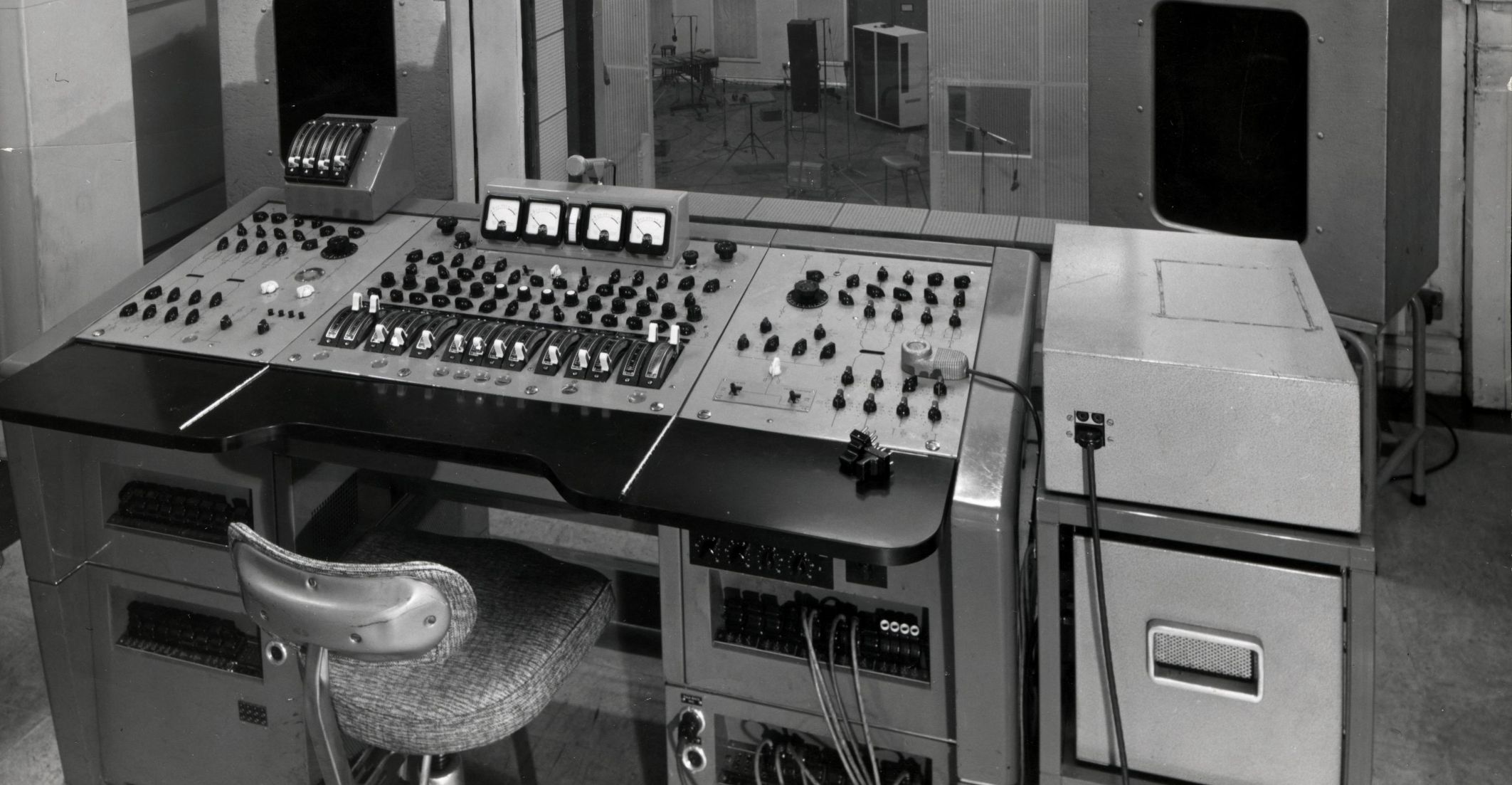 Possibly considering the song to be complete, a mono mix (remix one) was created on September 16th, 1967 in the control room of EMI Studio Three by George Martin and engineers Ken Scott and Jeff Jarratt. A tape copy of this mono mix was then made and given, along with a tape copy of “I Am The Walrus,” to Gavrik Losey, who was the assistant to Denis O’Dell, the film producer of “Magical Mystery Tour.” Although “Blue Jay Way” was not complete as we have come to know it, this tape copy was used in the making of a good portion of the film sequence of the song, taped between September 19th and 24th at the in Kent, where George lip-synced to the tape while sitting cross-legged on the pavement playing a keyboard drawn with chalk on the ground. Possibly considering the song to be complete, a mono mix (remix one) was created on September 16th, 1967 in the control room of EMI Studio Three by George Martin and engineers Ken Scott and Jeff Jarratt. A tape copy of this mono mix was then made and given, along with a tape copy of “I Am The Walrus,” to Gavrik Losey, who was the assistant to Denis O’Dell, the film producer of “Magical Mystery Tour.” Although “Blue Jay Way” was not complete as we have come to know it, this tape copy was used in the making of a good portion of the film sequence of the song, taped between September 19th and 24th at the in Kent, where George lip-synced to the tape while sitting cross-legged on the pavement playing a keyboard drawn with chalk on the ground.
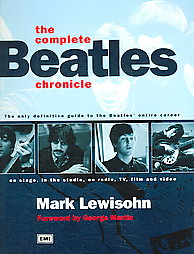 A further recording session for “Blue Jay Way” was deemed necessary, this being October 6th, 1967 in EMI Studio Two, beginning as usual at the documented 7 pm. The primary focus of this session was the overdub of a cello, the musician's name being lost with the passing of time, Mark Lewisohn’s book “The Complete Beatles Chronicle” stipulating that this unknown musician earned 27 pounds for the session. Being that no lead guitar (nor any guitar) is heard on the song, this extensive cello part takes the role of lead instrument in the song, which was also treated to a significant amount of ADT in places. Also recorded on this day was a tambourine part, undoubtedly played by Ringo. By midnight the session was complete. And, since a cello was now present on the finished recording, The Beatles took to adding some filmed sequences in the "Blue Jay Way" segment of the "Magical Mystery Tour" movie that featured the group taking turns playing a white cello. A further recording session for “Blue Jay Way” was deemed necessary, this being October 6th, 1967 in EMI Studio Two, beginning as usual at the documented 7 pm. The primary focus of this session was the overdub of a cello, the musician's name being lost with the passing of time, Mark Lewisohn’s book “The Complete Beatles Chronicle” stipulating that this unknown musician earned 27 pounds for the session. Being that no lead guitar (nor any guitar) is heard on the song, this extensive cello part takes the role of lead instrument in the song, which was also treated to a significant amount of ADT in places. Also recorded on this day was a tambourine part, undoubtedly played by Ringo. By midnight the session was complete. And, since a cello was now present on the finished recording, The Beatles took to adding some filmed sequences in the "Blue Jay Way" segment of the "Magical Mystery Tour" movie that featured the group taking turns playing a white cello.
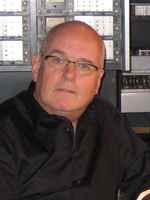 A new attempt at creating an official mono mix of the song was done in EMI Studio Three on October 12th, 1967, by engineers Ken Scott and Richard Lush with, surprisingly, John Lennon stipulated as producer. Eight attempts were made, numbered 2 through 9, with parts of mixes 6 and 9 being edited together to create one complete mono mix. While a lot of work was put forth to create this mono mix, it ended up being improved upon later. A new attempt at creating an official mono mix of the song was done in EMI Studio Three on October 12th, 1967, by engineers Ken Scott and Richard Lush with, surprisingly, John Lennon stipulated as producer. Eight attempts were made, numbered 2 through 9, with parts of mixes 6 and 9 being edited together to create one complete mono mix. While a lot of work was put forth to create this mono mix, it ended up being improved upon later.
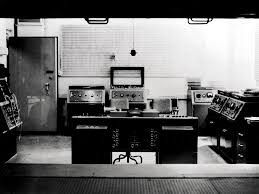 The released stereo and mono mixes of “Blue Jay Way” both ended up being created on November 7th, 1967. First, the stereo mix was attempted in the control room of EMI Studio Two by George Martin, Ken Scott and Peter Mew. Two attempts were made, the second being deemed best for the time being, this then being edited in some undisclosed way. Then, in a later session that same day, a different engineering team consisting of Geoff Emerick and Graham Kirkby met with George Martin in EMI Studio One to create the mono mix of the song. They worked extensively on this, attempting this mono mix nine times (remixes 20 through 28), remix 27 being considered the best. The released stereo and mono mixes of “Blue Jay Way” both ended up being created on November 7th, 1967. First, the stereo mix was attempted in the control room of EMI Studio Two by George Martin, Ken Scott and Peter Mew. Two attempts were made, the second being deemed best for the time being, this then being edited in some undisclosed way. Then, in a later session that same day, a different engineering team consisting of Geoff Emerick and Graham Kirkby met with George Martin in EMI Studio One to create the mono mix of the song. They worked extensively on this, attempting this mono mix nine times (remixes 20 through 28), remix 27 being considered the best.
 George Martin then thought to have another go at creating a stereo mix, but this time with a new idea. The idea was to play a recording of the song backwards simultaneous to the making of the stereo mix, panning in the backward tape to fill in what were considered empty gaps in the song. They gave this idea three attempts (remixes 10 through 12) before deciding that remix 12 was the best. With this new backwards idea in place, they thought to use this stereo mix for the mono version as well, knowing they wouldn’t be able to create it exactly the same way with another attempt at a mono mix. This idea was abandoned, however, mono remix 27 being the released version without any backward recording present. George Martin then thought to have another go at creating a stereo mix, but this time with a new idea. The idea was to play a recording of the song backwards simultaneous to the making of the stereo mix, panning in the backward tape to fill in what were considered empty gaps in the song. They gave this idea three attempts (remixes 10 through 12) before deciding that remix 12 was the best. With this new backwards idea in place, they thought to use this stereo mix for the mono version as well, knowing they wouldn’t be able to create it exactly the same way with another attempt at a mono mix. This idea was abandoned, however, mono remix 27 being the released version without any backward recording present.
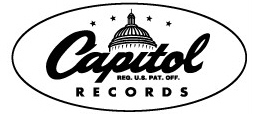 Both the mono mix (remix 27) and stereo mix (remix 12) underwent some editing work on this day, possibly involving the oscillating and highly reverberated organ swirling sounds at the end of both mixes, the stereo mix differing somewhat from the mono mix. Also, tape copies were made of both the edited mono and stereo mixes to give to Voyle Gilmore of Capitol Records, who happened to be present on this day and ready to hand carry them back to the US. The stereo landscape of the released version consists of the rhythm track in the left channel, lead vocals, cello and tambourine in the right channel, and the background vocals and backward recordings centered in the mix. Both the mono mix (remix 27) and stereo mix (remix 12) underwent some editing work on this day, possibly involving the oscillating and highly reverberated organ swirling sounds at the end of both mixes, the stereo mix differing somewhat from the mono mix. Also, tape copies were made of both the edited mono and stereo mixes to give to Voyle Gilmore of Capitol Records, who happened to be present on this day and ready to hand carry them back to the US. The stereo landscape of the released version consists of the rhythm track in the left channel, lead vocals, cello and tambourine in the right channel, and the background vocals and backward recordings centered in the mix.
Song Structure and Style
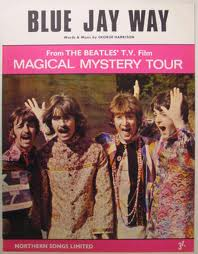 The drone in the key of C which is maintained throughout “Blue Jay Way,” as already mentioned, indicates the influence of Indian music even without the use of Indian instrumentation. The structure, however, is much more Western, consisting of a ‘verse/ refrain/ verse/ refrain/ verse/ refrain/ refrain/ refrain/ refrain’ (or abababbbb) format. Noteworthy indeed is the 4x repeat of the refrain at the end, although they all differ from each other to various degrees. A simple but dramatic introduction precedes the song and a repeating conclusion ends it, but no solo is included. The drone in the key of C which is maintained throughout “Blue Jay Way,” as already mentioned, indicates the influence of Indian music even without the use of Indian instrumentation. The structure, however, is much more Western, consisting of a ‘verse/ refrain/ verse/ refrain/ verse/ refrain/ refrain/ refrain/ refrain’ (or abababbbb) format. Noteworthy indeed is the 4x repeat of the refrain at the end, although they all differ from each other to various degrees. A simple but dramatic introduction precedes the song and a repeating conclusion ends it, but no solo is included.
The introduction begins very quietly with George on the organ, starting with the single note drone in C which continues throughout the song, followed by a lower octave C as the volume begins to rise. Then George premiers the melody line of the refrain on the organ, followed by the first appearance of the cello with a swooping note to end the 23-second introduction which has no established meter whatsoever.
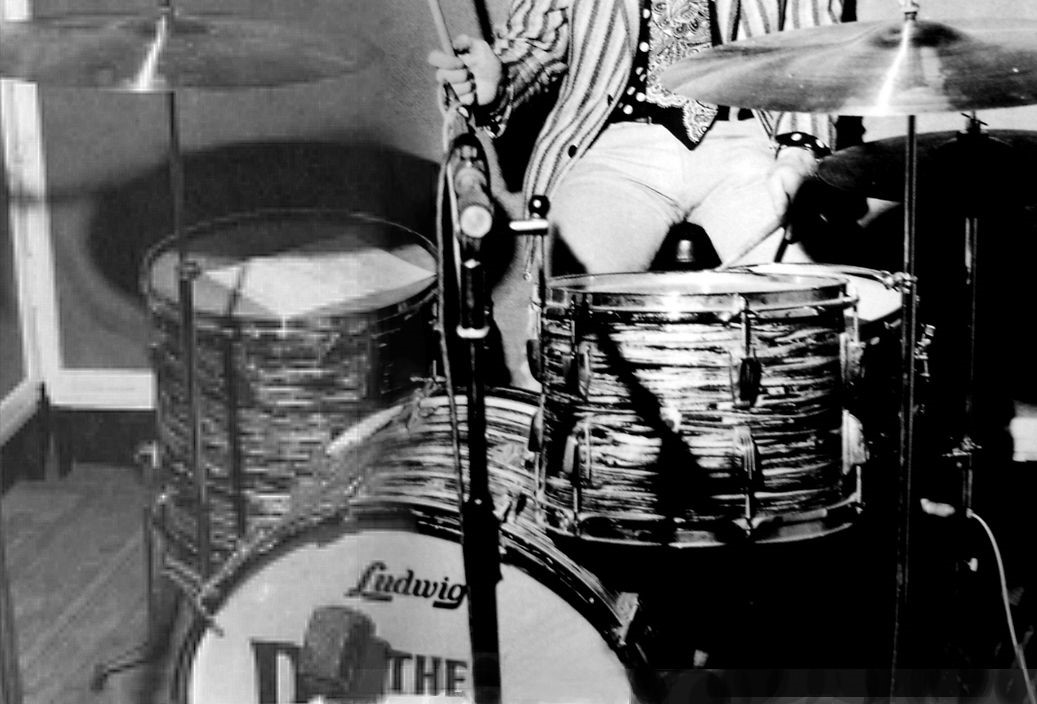 George then begins singing the pick-up line “There’s a fog upon L.A.” to bring us into the first eight-measure verse. The only added instrumentation for this first verse is Paul’s bass and Ringo plodding out the quarter notes of the straight 4/4 time signature on his toms and kick drum. This, of course, is spookily accented by the backwards snippets of the already finished song being faded in and out of the mix in-between George’s vocal lines (stereo version only). It appears that a chord change occurs with the rising notes of the line “we’ll be over soon they said,” but the drone in C labors on as the backdrop, indicating that we haven’t changed the chord at all. George played the entire melody line on the organ during the rhythm track, which acted as a guide for himself when he added the vocals later as an overdub. The plodding drums and bass continue until the seventh measure where Ringo crashes his cymbal on the downbeat on George’s line “now they’ve lost themselves instead.” The last two measures are actually just taken up with the C drone in anticipation of the first refrain that follows. George then begins singing the pick-up line “There’s a fog upon L.A.” to bring us into the first eight-measure verse. The only added instrumentation for this first verse is Paul’s bass and Ringo plodding out the quarter notes of the straight 4/4 time signature on his toms and kick drum. This, of course, is spookily accented by the backwards snippets of the already finished song being faded in and out of the mix in-between George’s vocal lines (stereo version only). It appears that a chord change occurs with the rising notes of the line “we’ll be over soon they said,” but the drone in C labors on as the backdrop, indicating that we haven’t changed the chord at all. George played the entire melody line on the organ during the rhythm track, which acted as a guide for himself when he added the vocals later as an overdub. The plodding drums and bass continue until the seventh measure where Ringo crashes his cymbal on the downbeat on George’s line “now they’ve lost themselves instead.” The last two measures are actually just taken up with the C drone in anticipation of the first refrain that follows.
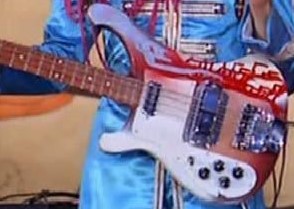 This refrain is actually nine measures in length and shows Ringo switching over to a swing beat on the drums (ala a slowed down version of “Penny Lane”) now utilizing a ride cymbal and commanding snare drum. Paul continues his single note drone on bass until the fifth measure where he follows George’s rising vocal line. George once again plays the entire vocal melody line on the organ during the rhythm track. The drums and bass guitar stop once again after eight measures are completed to allow the drone to fill the ninth measure (and some residual backwards cymbals on the stereo mix). This refrain concludes with George’s pick-up line “Well it only goes to…” while Ringo plays a simple drum fill to usher in the second verse that follows, which brings us back to straight 4/4 time once again. This refrain is actually nine measures in length and shows Ringo switching over to a swing beat on the drums (ala a slowed down version of “Penny Lane”) now utilizing a ride cymbal and commanding snare drum. Paul continues his single note drone on bass until the fifth measure where he follows George’s rising vocal line. George once again plays the entire vocal melody line on the organ during the rhythm track. The drums and bass guitar stop once again after eight measures are completed to allow the drone to fill the ninth measure (and some residual backwards cymbals on the stereo mix). This refrain concludes with George’s pick-up line “Well it only goes to…” while Ringo plays a simple drum fill to usher in the second verse that follows, which brings us back to straight 4/4 time once again.
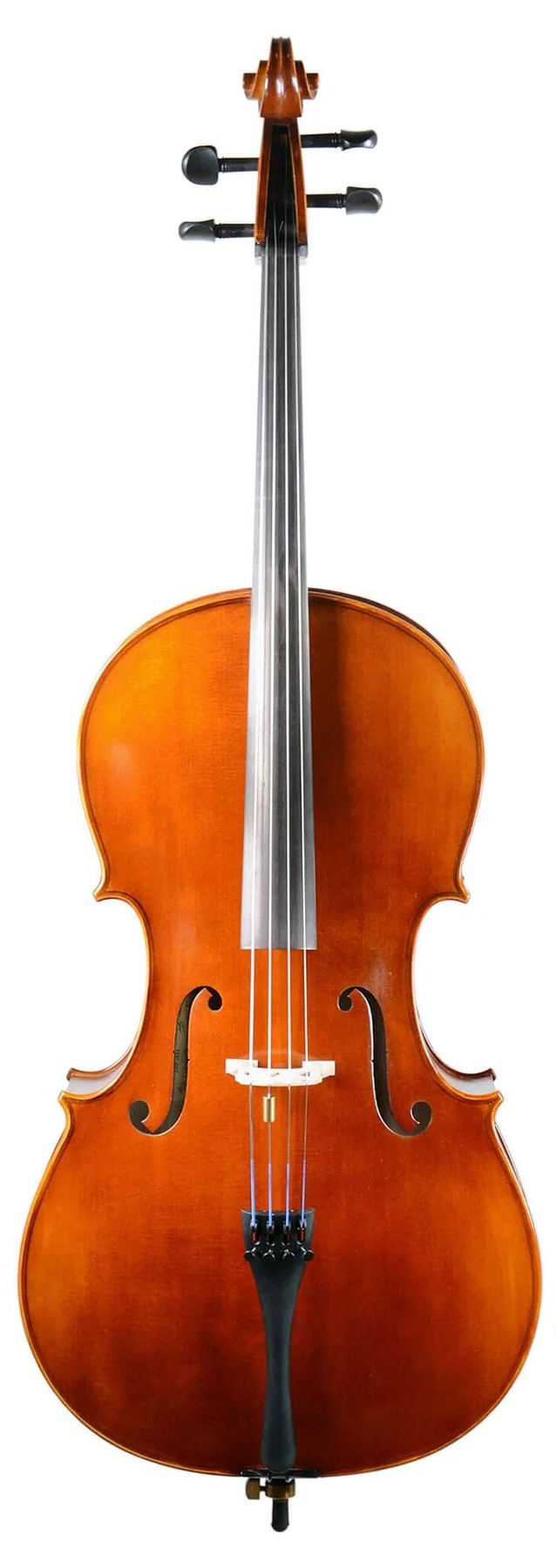 The second verse is identical in instrumentation to the first, although Ringo gets more adventurous on the drums, adding three drum fills strategically within the first six measures. After the cymbal crash that begins the seventh measure, we now can discern the reappearance of the cello playing a very Eastern-flavored sliding passage with the organ drone in the background. Ringo then plays two triplets on his snare drum to reintroduce the swing beat of the second refrain that comes next. The second verse is identical in instrumentation to the first, although Ringo gets more adventurous on the drums, adding three drum fills strategically within the first six measures. After the cymbal crash that begins the seventh measure, we now can discern the reappearance of the cello playing a very Eastern-flavored sliding passage with the organ drone in the background. Ringo then plays two triplets on his snare drum to reintroduce the swing beat of the second refrain that comes next.
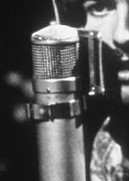 The second refrain adds some key elements to differentiate it from the first. The cello plays various alternate melody lines and begins to appear as the lead instrument in the song, while background vocals appear for the first time singing “don’t be long” in two different configurations. When most of the instruments drop out in the eighth and ninth measures, the cello plays a descending melody line that keeps the time signature going until George begins his next pick-up line “now it’s past my bed I know” while Ringo plays a drum fill to bring us back once again to straight 4/4 time for another verse. And we can’t forget to mention the menacing backwards sounds at the end of this refrain in the stereo mix. The second refrain adds some key elements to differentiate it from the first. The cello plays various alternate melody lines and begins to appear as the lead instrument in the song, while background vocals appear for the first time singing “don’t be long” in two different configurations. When most of the instruments drop out in the eighth and ninth measures, the cello plays a descending melody line that keeps the time signature going until George begins his next pick-up line “now it’s past my bed I know” while Ringo plays a drum fill to bring us back once again to straight 4/4 time for another verse. And we can’t forget to mention the menacing backwards sounds at the end of this refrain in the stereo mix.
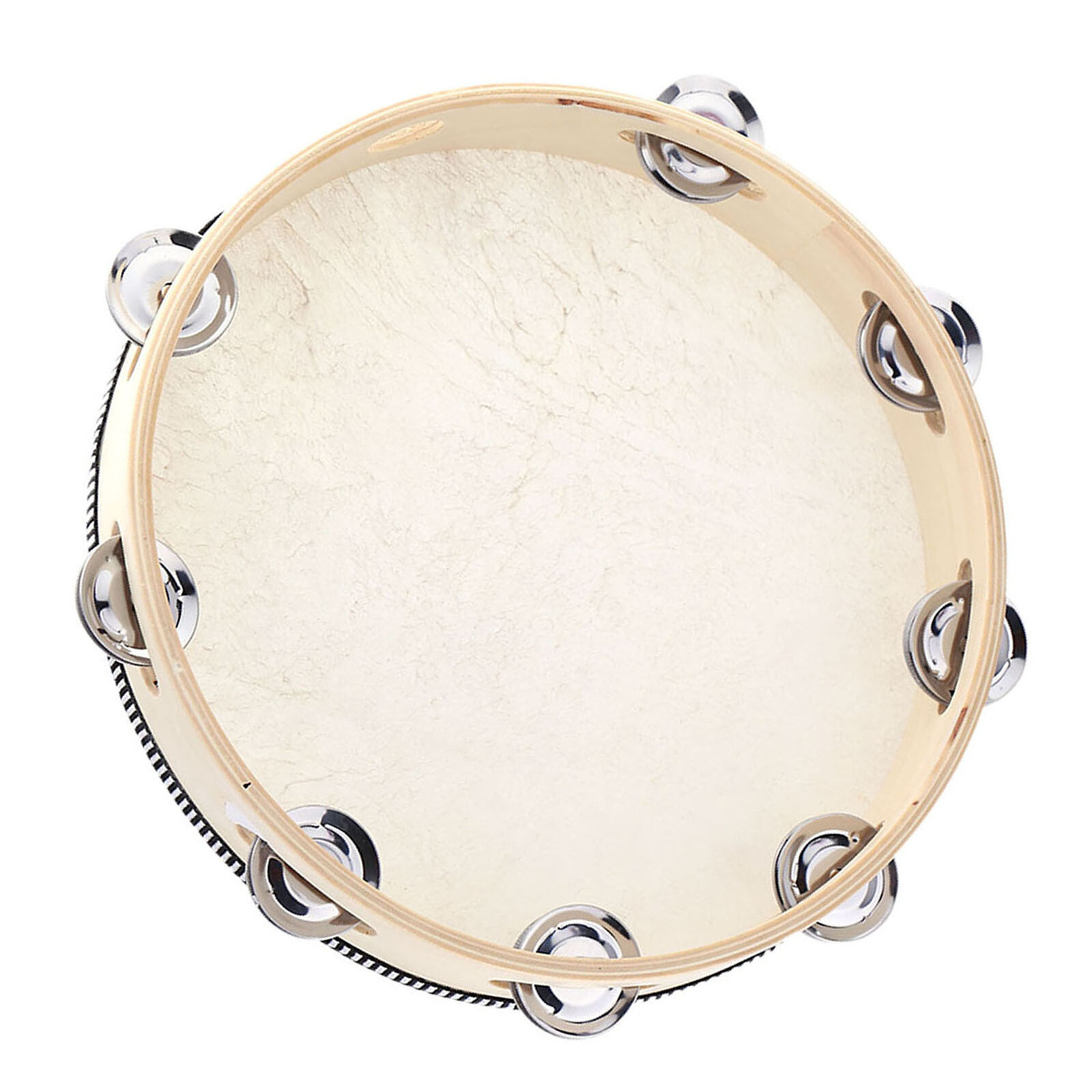 The third verse adds yet more elements to the previous verses, one of them being four harmonized passages that repeat the ending words of George’s four phrases, namely “know,” “go,” “day” and “way.” The cello also plays chopping quarter note accents throughout this verse to add to the bottom end of the sound. We also now hear the first appearance of an overdubbed tambourine playing accents on the two- and four- beat of every measure. As the final vocal phrase, the only appearance of the title of the song, rings out in the seventh measure, this stopping the beat as in the previous verses, Ringo goes into a drum break that ushers in the refrain that follows. However, he appears to have forgotten that the refrains are supposed to be in a swing beat, now continuing in a straight 4/4 rhythm for the remainder of the song. Or maybe it was intentional, who knows. In any event the backwards recording of the finished song eerily continues in the stereo mix to freak us out a little more. The third verse adds yet more elements to the previous verses, one of them being four harmonized passages that repeat the ending words of George’s four phrases, namely “know,” “go,” “day” and “way.” The cello also plays chopping quarter note accents throughout this verse to add to the bottom end of the sound. We also now hear the first appearance of an overdubbed tambourine playing accents on the two- and four- beat of every measure. As the final vocal phrase, the only appearance of the title of the song, rings out in the seventh measure, this stopping the beat as in the previous verses, Ringo goes into a drum break that ushers in the refrain that follows. However, he appears to have forgotten that the refrains are supposed to be in a swing beat, now continuing in a straight 4/4 rhythm for the remainder of the song. Or maybe it was intentional, who knows. In any event the backwards recording of the finished song eerily continues in the stereo mix to freak us out a little more.
We next go into a four-times-repeated refrain, all of which differ from the earlier refrains in more ways than the switch in rhythm style and added tambourine.
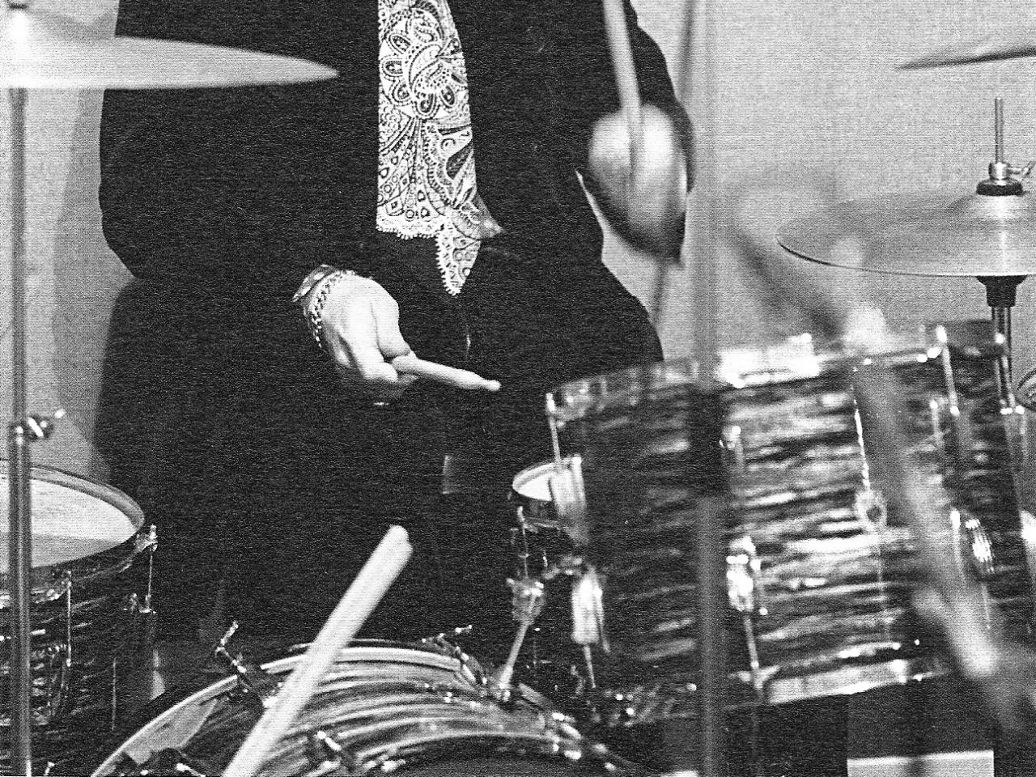 Refrain One: The first of these refrains contains all of the elements and instrumentation of the second refrain, but is now only eight measures long instead of nine, the ninth measure being dropped because there is no stopping of the drums and bass to usher in another verse. However, the sixth measure is in 2/4, George coming in a little early on his final line “for I may be asleep.” Refrain One: The first of these refrains contains all of the elements and instrumentation of the second refrain, but is now only eight measures long instead of nine, the ninth measure being dropped because there is no stopping of the drums and bass to usher in another verse. However, the sixth measure is in 2/4, George coming in a little early on his final line “for I may be asleep.”
Refrain Two: The second of these four refrains has the background vocals dropping their usual pattern in favor of harmonizing with George’s lead vocals on the lines “please don’t you be very long” and then “please don’t be long.” This refrain is only seven measures in length, the fifth measure being in 6/4, followed by the cello playing a staccato-like descending passage in replacement of George omitting his last vocal line “or I may be asleep” this time around.
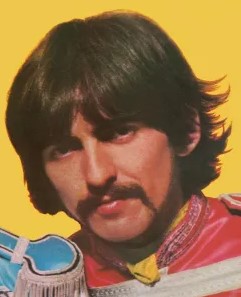 Refrain Three: The third of these refrains, while still being seven measures long with the fifth measure in 6/4, has the background vocals harmonizing with George’s lead vocals in all three melodic phrases, himself also dropping the final phrase this time as well. The second measure in this refrain contains a rather blurred-note passage on the cello on top of Ringo’s syncopated drum fill, one that we’re yet to hear again. The cello also fills the sixth and seventh measures with the same staccato-like descending passage as in the previous refrain, although it is played an octave lower. Refrain Three: The third of these refrains, while still being seven measures long with the fifth measure in 6/4, has the background vocals harmonizing with George’s lead vocals in all three melodic phrases, himself also dropping the final phrase this time as well. The second measure in this refrain contains a rather blurred-note passage on the cello on top of Ringo’s syncopated drum fill, one that we’re yet to hear again. The cello also fills the sixth and seventh measures with the same staccato-like descending passage as in the previous refrain, although it is played an octave lower.
Refrain Four: The fourth and final refrain in this set is actually only five measures long and has the background vocals harmonizing with the lead vocals on all three phrases once again. Ringo now plays repeated sporadic drum fills throughout this refrain as if he might have lost his bearings somewhat. The fifth measure is also in 6/4 which then ends the refrain.
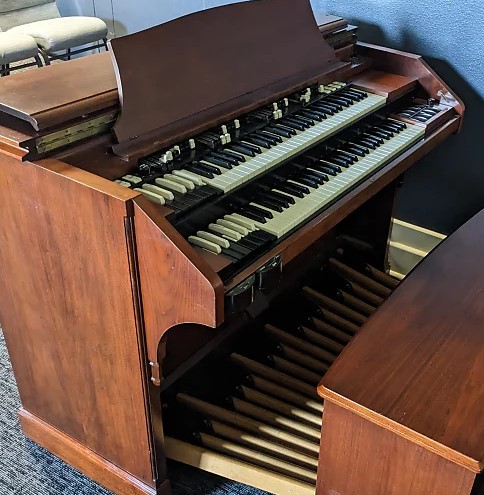 Now we go into a twelve-measure conclusion of the song (all measures in 4/4 time) which appears to meander aimlessly but ends solidly on the downbeat. The phrase “don’t be long” is repeated seven times during this conclusion in various configurations but harmonized perfectly. (The phrase “don’t be long,” incidentally, is repeated 29 times in the song.) A unique element heard in this conclusion are the tambourine accents in conjunction with the swift “don’t be long, don’t be long” harmonies in the fifth and sixth measures. The above mentioned blurred-note passage on the cello is now repeated in both the sixth and eleventh measures of the conclusion. After the final downbeat, the twelfth measure consists of a highly reverberated Hammond organ swell from what sounds like a vari-speeded tape (a possible edit job). Now we go into a twelve-measure conclusion of the song (all measures in 4/4 time) which appears to meander aimlessly but ends solidly on the downbeat. The phrase “don’t be long” is repeated seven times during this conclusion in various configurations but harmonized perfectly. (The phrase “don’t be long,” incidentally, is repeated 29 times in the song.) A unique element heard in this conclusion are the tambourine accents in conjunction with the swift “don’t be long, don’t be long” harmonies in the fifth and sixth measures. The above mentioned blurred-note passage on the cello is now repeated in both the sixth and eleventh measures of the conclusion. After the final downbeat, the twelfth measure consists of a highly reverberated Hammond organ swell from what sounds like a vari-speeded tape (a possible edit job).
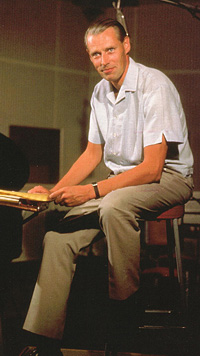 It appears that the complicated nature of the final refrains and conclusion were a result of the group and George Martin adding overdubs to the somewhat vision-less ending The Beatles performed on the rhythm track. This opinion can be made because of the unorthodox positioning of Ringo’s drum fills in the final 90 seconds of the song. With no vocals being performed on the rhythm track, they may have “lost their way,” so to speak, but with some ingenuity, they made it work. It appears that the complicated nature of the final refrains and conclusion were a result of the group and George Martin adding overdubs to the somewhat vision-less ending The Beatles performed on the rhythm track. This opinion can be made because of the unorthodox positioning of Ringo’s drum fills in the final 90 seconds of the song. With no vocals being performed on the rhythm track, they may have “lost their way,” so to speak, but with some ingenuity, they made it work.
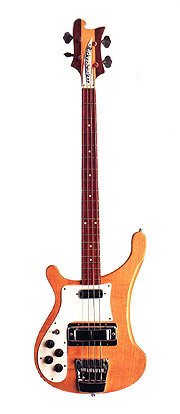 George may not have been the best keyboardist, as Geoff Emerick noted above, but he played competently enough to drive the song throughout. His droll vocals, treated with layered effects as they were, worked well to create the sleepiness of the subject matter. Ringo put in a tremendous effort on drums, throwing in fills according to feel as well as changing rhythm where necessary (or most of the time). Paul didn’t need to put in a stellar performance on bass this time around because the Indian drone was all that was needed. However, he and John did their usual good job on harmonies. And 'three cheers' to the unnamed lead cellist. Who was that masked man? George may not have been the best keyboardist, as Geoff Emerick noted above, but he played competently enough to drive the song throughout. His droll vocals, treated with layered effects as they were, worked well to create the sleepiness of the subject matter. Ringo put in a tremendous effort on drums, throwing in fills according to feel as well as changing rhythm where necessary (or most of the time). Paul didn’t need to put in a stellar performance on bass this time around because the Indian drone was all that was needed. However, he and John did their usual good job on harmonies. And 'three cheers' to the unnamed lead cellist. Who was that masked man?
American Releases
November 27th, 1967 was the US release date for the album “Magical Mystery Tour,” which included “Blue Jay Way” as the fourth song on side one. Positioning the song after “Flying,” which was in the same key, was somewhat less effective than in Britain where it occupied the entire side of one of the EPs in the double EP set. The vinyl version of the album continued to be reissued in the US throughout the years, while it was first released on compact disc on September 21st, 1987 and then was re-released in a remastered state on September 9th, 2009.
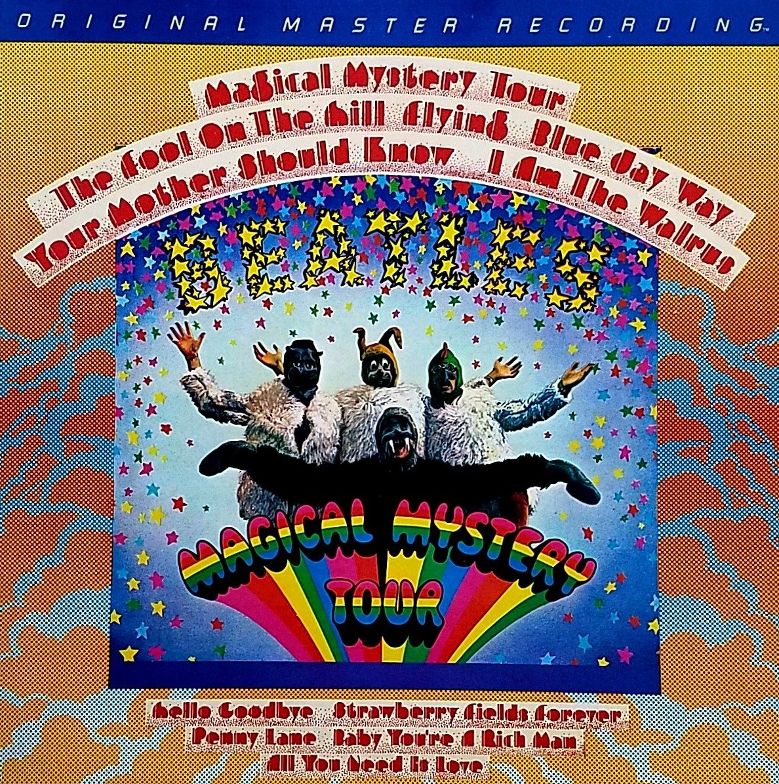 An interesting US vinyl edition of the “Magical Mystery Tour” album was released on February 1st, 1981. This was manufactured by Mobile Fidelity Sound Lab in Chatsworth, California and was part of their "Original Master Recording" series, which prepared its albums utilizing half-speed mastering technology from the original master tapes. In this case, however, they leased the master tape from EMI in the UK, not realizing that this was a second generation master tape originally supplied by Capitol Records in America. While this release sounded superior to conventional vinyl versions, it still contained the duophonic (fake stereo) mixes of “Penny Lane,” “Baby, You're A Rich Man” and “All You Need Is Love.” Also, as was the case with all of the vinyl editions of the album by this time, the original multi-page booklet was omitted from this new vinyl release. Nevertheless, this edition of the album was only available for a short time and is quite collectible today. An interesting US vinyl edition of the “Magical Mystery Tour” album was released on February 1st, 1981. This was manufactured by Mobile Fidelity Sound Lab in Chatsworth, California and was part of their "Original Master Recording" series, which prepared its albums utilizing half-speed mastering technology from the original master tapes. In this case, however, they leased the master tape from EMI in the UK, not realizing that this was a second generation master tape originally supplied by Capitol Records in America. While this release sounded superior to conventional vinyl versions, it still contained the duophonic (fake stereo) mixes of “Penny Lane,” “Baby, You're A Rich Man” and “All You Need Is Love.” Also, as was the case with all of the vinyl editions of the album by this time, the original multi-page booklet was omitted from this new vinyl release. Nevertheless, this edition of the album was only available for a short time and is quite collectible today.
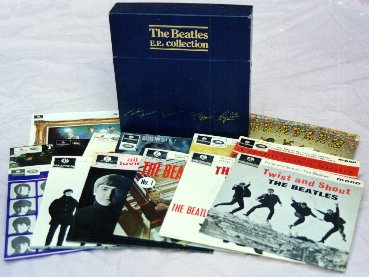 The above-mentioned British EP set was released in both mono and stereo on compact disc in the US as part of the “Compact Disc EP Collection” box set, which was released on June 30th, 1992. The above-mentioned British EP set was released in both mono and stereo on compact disc in the US as part of the “Compact Disc EP Collection” box set, which was released on June 30th, 1992.
Then on September 9th, 2009, the original mono mix of “Blue Jay Way” was included in the CD box set “The Beatles In Mono,” this extensive collection containing the entire mono Beatles catalog in a vibrant remastered condition. The vinyl edition of this box set was first released on September 9th, 2014.
On October 8th, 2012, a restored version of the film “Magical Mystery Tour” was released on DVD and Blu-ray, available also as a deluxe edition “Collectors Box” which included an actual vinyl EP set as originally released in Britain but in remastered mono. With “Blue Jay Way” as part of this set, this was the first time the vinyl EP was released in America.
Live Performances
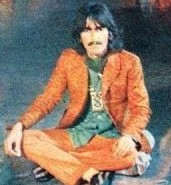 The only intended performance of “Blue Jay Way” was the interesting video footage they filmed for the British TV movie “Magical Mystery Tour.” The footage of George lip-syncing the song was shot at the West Malling Air Station in Kent (sometime between September 19th through 24th, 1967) and then various extra footage was filmed at Ringo’s country house in Weybridge, Surrey (November 3rd, 1967) completed the video. Plans to have the Mystery Tour bus run into George at the end of the song were abandoned, although you can see the bus coming up behind George, the picture then freezing for the final seconds of the song. The only intended performance of “Blue Jay Way” was the interesting video footage they filmed for the British TV movie “Magical Mystery Tour.” The footage of George lip-syncing the song was shot at the West Malling Air Station in Kent (sometime between September 19th through 24th, 1967) and then various extra footage was filmed at Ringo’s country house in Weybridge, Surrey (November 3rd, 1967) completed the video. Plans to have the Mystery Tour bus run into George at the end of the song were abandoned, although you can see the bus coming up behind George, the picture then freezing for the final seconds of the song.
Conclusion
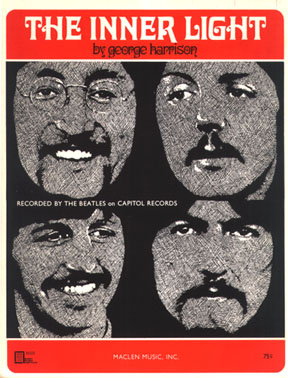 George Harrison is known to have been the one to bring the influence of Indian music to the Western world, beginning with his sitar noodling on “Norwegian Wood” in late 1965. In retrospect, only three Harrison-written songs (aka “Harrisongs”) released by The Beatles featured Indian instruments, these being “Love You To,” “Within You Without You” and “The Inner Light.” The substance of Indian musical structures, however, was very present in many other “Harrisongs” written during this period, “Blue Jay Way” being one of them. George even recorded and released a soundtrack album of instrumental music entitled “Wonderwall Music” which featured Indian Instrumentation, this being the very first album released on the Apple label in Britain (second in the US to the “White Album”). George Harrison is known to have been the one to bring the influence of Indian music to the Western world, beginning with his sitar noodling on “Norwegian Wood” in late 1965. In retrospect, only three Harrison-written songs (aka “Harrisongs”) released by The Beatles featured Indian instruments, these being “Love You To,” “Within You Without You” and “The Inner Light.” The substance of Indian musical structures, however, was very present in many other “Harrisongs” written during this period, “Blue Jay Way” being one of them. George even recorded and released a soundtrack album of instrumental music entitled “Wonderwall Music” which featured Indian Instrumentation, this being the very first album released on the Apple label in Britain (second in the US to the “White Album”).
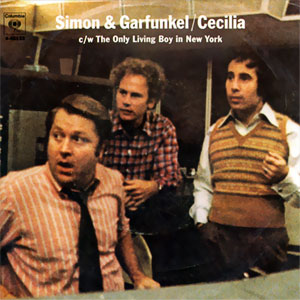 As for the actual house on “Blue Jay Way,” George’s song was not the only famous composition written there. Paul Simon also reportedly wrote “Bridge Over Troubled Water” in the same Hollywood Hills home, he even recording some of the percussion of Simon And Garfunkel’s hit “Cecelia” there as well. Maybe the house is worth the $4,599,000 asking price! As for the actual house on “Blue Jay Way,” George’s song was not the only famous composition written there. Paul Simon also reportedly wrote “Bridge Over Troubled Water” in the same Hollywood Hills home, he even recording some of the percussion of Simon And Garfunkel’s hit “Cecelia” there as well. Maybe the house is worth the $4,599,000 asking price!
Song Summary
“Blue Jay Way”
Written by: George Harrison
-
Song Written: August 1, 1967
-
Song Recorded: September 6, 7 and October 6, 1967
-
First US Release Date: November 27, 1967
-
-
US Single Release: n/a
-
Highest Chart Position: n/a
-
-
Length: 3:50
-
Key: C major
-
Producer: George Martin
-
Engineers: Geoff Emerick, Ken Scott, Peter Vince, Richard Lush
Instrumentation (most likely):
-
George Harrison - Lead and Background Vocals, Organ (Hammond RT-3)
-
Paul McCartney - Bass Guitar (1964 Rickenbacker 4001 S), background vocals
-
Ringo Starr - Drums (1964 Ludwig Super Classic Black Oyster Pearl), tambourine
-
John Lennon - backround vocals
-
Unknown - cello
Written and compiled by David Rybaczewski
|
IF YOU WOULD LIKE TO MAKE A DONATION TO KEEP THIS WEBSITE UP AND RUNNING, PLEASE CLICK BELOW!
Sign Up Below for our MONTHLY BEATLES TRIVIA QUIZ!
|